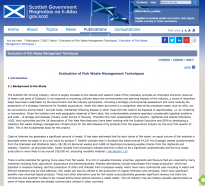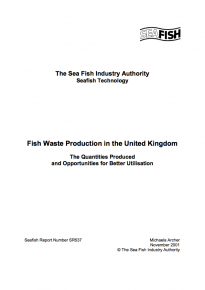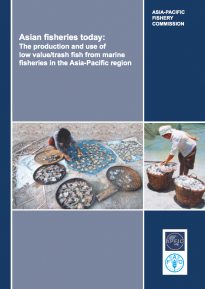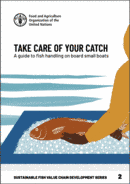Services and Infrastructure for Processing Plants
Key services and infrastructure for reducing food loss and waste (FLW) associated with processing plant and waste disposal or utilization include:
- Road and modern transport infrastructure
- Energy
- Cold storage
- Food safety control
- Waste utilization service providers such as fish meal plants, biogas producers, composting businesses, pharmaceutical industries
- Refrigeration equipment supply and servicing
- Packaging/containers
Evaluation of Fish Waste Management Techniques in Scotland
A strategic framework for Scottish aquaculture recognized that whilst processed waste, such as offal, can be converted to animal feeds and pet foods, mortalities following disease or other mass fish kills need to be disposed of appropriately (i.e. by rendering or incineration). Given the isolation and wide geographic dispersal of farm sites, this understandably presents operators considerable logistical problems - and costs - of storage and disposal (mostly under license in Norway). Therefore, the main stakeholders (the industry, Highlands and Islands Enterprise (HIE), local authorities and the UK Association of Fish Meal Manufacturers) worked with the Scottish Executive and SEPA to develop a collective fish waste strategy management infrastructure for the safe disposal of by products from the aquaculture industry.
Fish Waste Production in the United Kingdom
The major outlet for fish waste is fish-meal and oil production. Only small quantities of fish waste are currently utilized for other purposes such as pet food, animal feed, fishing bait etc. In some areas of the UK, fish waste primarily ends up in landfill sites. Fish-meal and oil production requires considerable investment in plant and there are significant economies of scale. Fish-meal and oil are produced world-wide and are traded internationally as commodities. There are currently three specialist plants in the UK which take fish for the commercial production of fish-meal and oil at Grimsby, Aberdeen and Shetland. These plants are under common ownership. Processors can only send waste material to these plants if they have passed a factory inspection and adhere to certain quality and supply conditions.
The production and use of low value/trash fish from marine fisheries in the Asia-Pacific region
In the Asia-Pacific region, low value fish, which historically was discarded as waste at sea, is now landed and utilized. The issues related to low value/trash fish landings from multi-species/multi-gear fisheries are underpinned by the rapid development of the aquaculture industry and the increasing demand for fish by consumers. The fisheries that have evolved under these two pressures represent new challenges for sustainable fisheries management in the region. Several issues concerning low value/trash fish need to be resolved in order to ensure that fisheries of the Asia-Pacific region contribute more to the region’s increasing use of low value/trash fish for aquaculture and other animal feeds:
- competition between use of low value/trash fish for fish meal versus use of low value/trash fish for human food
- sustainability of the current system
- amount of fish that becomes trash due to poor handling and post-harvest strategies
- growth over fishing
- harvesting of juveniles of commercial species
- discarding of unwanted fish
Key Publications
Evaluation of Fish Waste Management Techniques A study of finfish waste, particularly that arising from aquaculture, and utilization options. | |
The report estimates the types and quantities of fish waste generated in the different sectors, from catching to processing, and summarizes the current utilization or disposal of that waste. | |
The importance of low value/trash fish in the Asia-Pacific is reviewed, including challenges in production and use. |
More Resources
More Resources
31 October 2023














